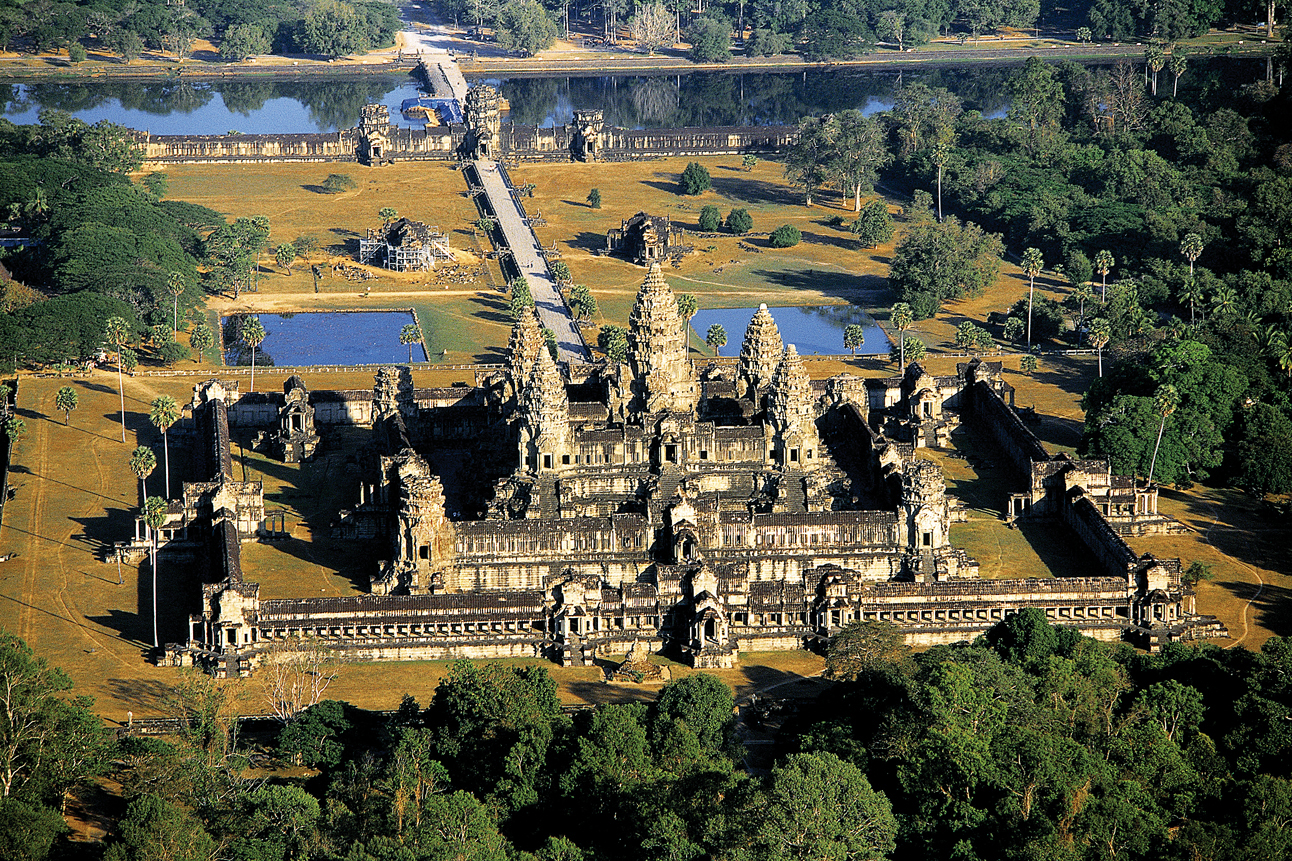A History of World Societies:
Printed Page 354
A History of World Societies Value
Edition: Printed Page 353
Chapter Chronology
State Formation and Indian Influences
Southeast Asia was long a crossroads. Traders from China, India, Africa, and Europe either passed through the region when traveling from the Indian to the Pacific Ocean, or came for its resources, notably spices. (See “Global Trade: Spices.”)
The northern part of modern Vietnam was under Chinese political control off and on from the second century B.C.E. to the tenth century C.E. (see “Vietnam” in Chapter 7), but Indian influence was of much greater significance for the rest of Southeast Asia. The first state to appear in historical records, called Funan by Chinese visitors, had its capital in southern Vietnam. In the first to sixth centuries C.E. Funan extended its control over much of Indochina and the Malay Peninsula. Merchants from northwest India would offload their goods and carry them across the narrowest part of the Malay Peninsula. The ports of Funan offered food and lodging to the merchants as they waited for the winds to shift to continue their voyages. Brahmin priests and Buddhist monks from India settled along with the traders, serving the Indian population and attracting local converts. Rulers often invited Indian priests and monks to serve under them, using them as foreign experts knowledgeable about law, government, architecture, and other fields.
Sixth-century Chinese sources report that the Funan king lived in a multistory palace and the common people lived in houses built on piles with roofs of bamboo leaves. The king rode around on an elephant, but narrow boats measuring up to ninety feet long were a more important means of transportation. The people enjoyed both cockfighting and pig fighting. Instead of drawing water from wells, as the Chinese did, they made pools, from which dozens of nearby families would draw water.

Picturing the PastBayan Relief, Angkor Among the many relief sculptures at the temples of Angkor are depictions of royal processions, armies at war, trade, cooking, cockfighting, and other scenes of everyday life. In the relief shown here, the boats and fish convey something of the significance of the sea to life in Southeast Asia. (Hervé Champollion/akg-images)ANALYZING THE IMAGE Find the boat. What do the people on it seem to be doing? What fish and animals do you see in the picture? Can you find the alligator eating a fish?CONNECTIONS Why would a ruler devote so many resources to decorating the walls of a temple? Why include scenes like this one?
After the decline of Funan, maritime trade continued to grow, and petty kingdoms appeared in many places. Indian traders frequently established small settlements, generally located on the coast. Contact with the local populations led to intermarriage and the creation of hybrid cultures. Local rulers often adopted Indian customs and values, embraced Hinduism and Buddhism, and learned Sanskrit, India’s classical literary language. Sanskrit gave different peoples a common mode of written expression, much as Chinese did in East Asia and Latin did in Europe.
When Indian traders, migrants, and adventurers entered mainland Southeast Asia, they encountered both long-settled peoples and migrants moving southward from the frontiers of China. As in other extensive migrations, the newcomers fought one another as often as they fought the native populations. In 939 the north Vietnamese became independent of China and extended their power southward along the coast of present-day Vietnam. The Thais had long lived in what is today southwest China and north Myanmar. In the eighth century the Thai tribes united in a confederacy and expanded northward against Tang China. Like China, however, the Thai confederacy fell to the Mongols in 1253. Still farther west another tribal people, the Burmese, migrated to the area of modern Myanmar in the eighth century. They also established a state, which they ruled from their capital, Pagan, and came into contact with India and Sri Lanka.
The most important mainland state was the Khmer (kuh-MAIR) Empire of Cambodia (802–1432), which controlled the heart of the region. The Khmers were indigenous to the area. Their empire eventually extended south to the sea and the northeast Malay Peninsula. Indian influence was pervasive; the impressive temple complex at Angkor Wat built in the early twelfth century was dedicated to the Hindu god Vishnu. Social organization, however, was modeled not on the Indian caste system but on indigenous traditions of social hierarchy. A large part of the population was of slave status, many descended from non-Khmer mountain tribes defeated by the Khmers. Generally successful in a long series of wars with the Vietnamese, the Khmers reached the peak of their power in 1219 and then gradually declined.

Angkor Wat Temple The Khmers built several stone temple complexes at Angkor. This aerial view catches something of the scale of the largest of these complexes, Angkor Wat. (© Roy Garner/Alamy)

